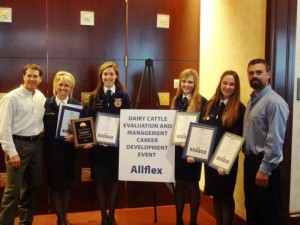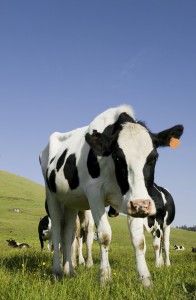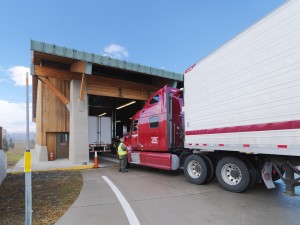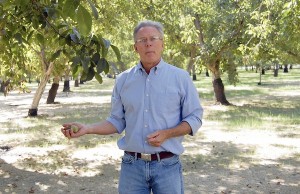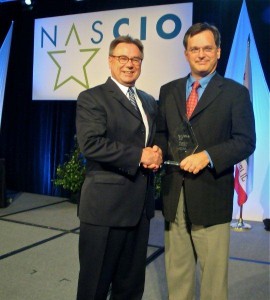http://www.justice.gov/usao/can/news/2012/2012_11_08_townsley.sentenced.press.html
(Released 10-8-12)
SAN FRANCISCO – Peter Townsley was sentenced yesterday to serve 364 days in prison and ordered to pay a fine of $125,000 for a scheme to defraud his customers in the organic farming industry, United States Attorney Melinda Haag announced. Townsley was also ordered to serve six months of community confinement, during which time he must perform 1,000 hours of community service related to organic production.
“By cheating and deceiving his organic farming customers, Mr. Townsley took advantage of their trust and undermined the integrity of an entire industry,” said U.S. Attorney Haag. “His actions are particularly troubling given the fact that consumers rely on the representations of all participants in the process when they pay a premium price for certified organic products. This prosecution demonstrates the commitment of federal and state authorities to hold those who choose to violate that trust accountable.”
Townsley pleaded guilty on Feb. 22, 2012, to two counts of mail fraud in violation of Title 18, United States Code, Section 1341. According to the plea agreement, Townsley was the president of California Liquid Fertilizer (CLF), a fertilizer manufacturing business that operated in the Salinas Valley. Townsley admitted that from April 2000 through December 2006, he sold Biolizer XN with a label that claimed it was approved for use in organic farming when it actually contained chemical ingredients that were prohibited for use in organic farming. During that period, CLF realized more than $6.5 million in gross sales from the sale of Biolizer XN.
According to the plea agreement, Congress enacted the Organic Foods Production Act in 1990 in order to establish national standards governing the production and marketing of certain agricultural products as “organic.” The United States Department of Agriculture subsequently enacted federal regulations governing organic agricultural production under the National Organic Program (NOP). The NOP specifically regulated, among other things, what materials organic farmers could use in production, including what materials could be applied to the soil as fertilizer.
Farmers can determine whether a fertilizer is suitable for use in organic production by checking the ingredients on the label. Farmers can also check to see if the fertilizer itself has been approved by the Organic Materials Review Institute (OMRI). OMRI is a non-profit organization that provides independent review of materials to determine their suitability for use in the production, processing and handling of products marketed as organic. If OMRI approves a fertilizer, the manufacturer is permitted to market its product as “OMRI Listed.
According to the plea agreement, Townsley applied for OMRI approval of Biolizer XN in 1998 and told OMRI that the fertilizer was made of fish, fish by-products, feathermeal and water. OMRI, thereafter, approved Biolizer XN for use in organic production. Townsley admitted that by April 2000, he had changed the ingredients in Biolizer XN to a product containing ammonium chloride, a material prohibited from use in organic agriculture. He did not notify OMRI of this change, falsely told OMRI that nothing had changed in Biolizer XN’s formulation when it was time for the annual renewal of Biolizer XN’s OMRI-approved listing and continued to market Biolizer XN to organic farmers as an OMRI-approved product containing fish and feathermeal when he knew that neither of those facts was true.
Townsley further admitted that by June 2001, he had again changed the formulation of Biolizer XN to include a different prohibited ingredient, ammonium sulfate. Once again, he did not inform OMRI of this change, continued to certify to OMRI that the formulation had not changed from the information he originally submitted to OMRI and continued to market and sell Biolizer XN to organic farmers as an OMRI- approved product that contained fish and feathermeal. Townsley admitted that he knew these representations to CLF’s customers were false when he made them and that by deceiving his customers, he was able to ensure continued sales of Biolizer XN to organic farmers.
“The USDA-OIG conducts investigations into allegations of fraud and other potentially criminal activity affecting USDA programs including the NOP,” said Special Agent in Charge Lori Chan for the Western Region of the United States. “The USDA-OIG is committed to bringing criminal violators who undermine the NOP program to justice in order to uphold the high standards behind the USDA organic label.”
Townsley, 50, a citizen of Canada, was originally indicted by a federal Grand Jury on June 1, 2010, and a superseding indictment was filed on July 7, 2011. In the superseding indictment, Townsley was charged with one count of conspiracy to commit mail fraud in violation of Title 18, United States Code, Section 1349, and seven counts of mail fraud in violation of Title 18, United States Code, Section 1341. Townsley pleaded guilty to two counts of mail fraud based on his mailing of renewal certifications to OMRI in 2005 and 2006.
In addition to the 364 days in prison, the Court also ordered Townsley to serve a three-year term of supervised release after his release from prison. Townsley was ordered to serve the first six months of that term in a halfway house. During that time, Townsley is to perform 1,000 hours of community service in one or more community organic farming projects, as supervised by the United States Probation Office. Townsley was ordered to surrender to the U.S. Marshal service on Nov. 9, 2012 in order to begin service of his prison sentence.
Stacey Geis and Susan Badger are the Assistant U.S. Attorneys who Prosecuted the case, with the assistance of Rania Ghawi and Rosario Calderon. The prosecution is the result of investigations by the United States Department of Agriculture, Office of Inspector General, the Federal Bureau of Investigation, and the California Department of Food and Agriculture. The fraud initially came to the attention of the California Department of Food and Agriculture through a whistle-blower employed at Townsley’s company.
Further Information:
Case #: CR 10 0428 CRB
A copy of this press release may be found on the U.S. Attorney’s Office’s website at www.usdoj.gov/usao/can.
Electronic court filings and further procedural and docket information are available at https://ecf.cand.uscourts.gov/cgi-bin/login.pl.
Judges’ calendars with schedules for upcoming court hearings can be viewed on the court’s website at www.cand.uscourts.gov.
All press inquiries to the U.S. Attorney’s Office should be directed to Jack Gillund at (415) 436-6599 or by e-mail at Jack.Gillund@usdoj.gov.
###
